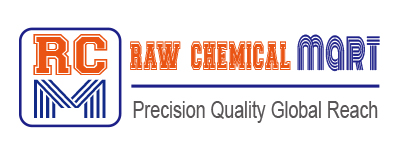Titanium dioxide (TiO₂), often referred to as the “king of white pigments,” is widely used in industries such as plastics, rubber, coatings, paper, and ceramics due to its excellent properties like high refractive index, strong tinting strength, and non-toxicity. However, untreated titanium dioxide has limitations, including poor photochemical stability, susceptibility to discoloration, and poor dispersibility. To address these issues, surface treatment is essential. Below is a summary of the key viewpoints and methods for the surface treatment of titanium dioxide:
Need for Surface Treatment
Photochemical Instability: Untreated TiO₂ tends to degrade under UV light, leading to discoloration, loss of gloss, and chalking.
Poor Dispersibility: Without surface treatment, TiO₂ particles tend to agglomerate, causing issues like floating, flocculation, and sedimentation in applications such as paints and inks.
Surface Treatment Benefits: Surface treatment improves dispersibility, light resistance, and weather resistance, expanding TiO₂’s application range.
Inorganic Surface Treatment Methods
Inorganic surface treatment involves coating TiO₂ with a layer of inorganic hydrated oxides to block lattice defects and reduce direct contact between TiO₂ and organic media. This enhances weather resistance and corrosion resistance.
a. Alumina (Al₂O₃) Coating
Mechanism: Alumina acts as an electron acceptor, quenching photoelectrons generated by UV absorption and inhibiting the formation of active radicals.
Process: Soluble aluminum salts (e.g., NaAlO₂, Al₂(SO₄)₃) are added to TiO₂ slurry at pH 9-10, forming a hydrated alumina layer on the surface.
Benefits: Improves dispersibility and stability in aqueous systems by:
Preventing particle agglomeration.
Increasing surface wettability.
Enhancing electrostatic repulsion between particles.
b. Silica (SiO₂) Coating
Mechanism: Silica forms a barrier on the TiO₂ surface, blocking photocatalytic activity and reducing direct contact with organic media.
Process: Water-soluble silicon compounds are added to TiO₂ slurry at pH 8-9, forming a hydrated silica layer.
Benefits: Enhances weather resistance by:
Protecting the TiO₂ core from acidic species.
Inhibiting crystal structure transformation and improving thermal stability.
c. Zirconia (ZrO₂) Coating
Mechanism: Zirconia has a high refractive index (2.170) and low UV absorption, reducing TiO₂’s photocatalytic activity.
Process: Zirconium salts are hydrolyzed in TiO₂ slurry, forming a continuous zirconia film on the surface.
Benefits: Improves light resistance by:
Blocking active radicals from contacting organic media.
Reducing electron-hole pair generation and migration.
Lowering surface hydroxyl content to slow down oxidative degradation.
d. Aluminum Phosphate (AlPO₄) Coating
Mechanism: Aluminum phosphate acts as an electron acceptor, quenching photoelectrons and improving light resistance. It also enhances dispersibility by adjusting surface potential.
Benefits:
Improves light resistance by blocking active radicals.
Enhances dispersibility in aqueous systems by increasing surface wettability and electrostatic repulsion.
Organic Surface Treatment Methods
Organic surface treatment uses surfactants or coupling agents to improve TiO₂’s compatibility and dispersibility in different media.
a. Surfactant Method
Mechanism: Surfactants adsorb onto TiO₂ particles, with hydrophilic groups attaching to the surface and hydrophobic groups interacting with organic media.
Types: Cationic, anionic, nonionic, or mixed surfactants.
Benefits: Improves dispersibility by reducing surface energy and preventing particle agglomeration.
b. Coupling Agent Method
Mechanism: Coupling agents (e.g., titanate, aluminate, silane) form chemical bonds with TiO₂ surface hydroxyl groups, improving compatibility with organic polymers.
Benefits: Enhances dispersibility and stability in organic matrices.
c. Organic Polymer Coating
Mechanism: Polymers are directly coated onto TiO₂ particles or formed in situ through polymerization.
Benefits: Improves dispersibility by creating steric hindrance and enhancing compatibility with polymer matrices.
Other Coatings
- Zirconium Oxide (ZrO₂): Enhances light resistance.
- Tin Oxide (SnO₂): Used for producing conductive titanium dioxide.
Research and Development
The performance of coated TiO₂ depends on the microstructure of the coating layer.
Ongoing research focuses on optimizing coating structures, understanding their relationship with application performance, and developing higher-quality coated TiO₂ products.
Conclusion
Surface treatment is crucial for enhancing the performance of titanium dioxide in various applications. Different coatings, such as alumina, silica, zirconia, and aluminum phosphate, offer unique advantages like improved dispersibility, light resistance, and weather resistance. Organic treatments further enhance compatibility and stability in organic media. Continued research is essential to develop advanced TiO₂ products tailored to specific industrial needs.
This summary provides a comprehensive overview of the surface treatment methods for titanium dioxide, highlighting their mechanisms, benefits, and applications.

